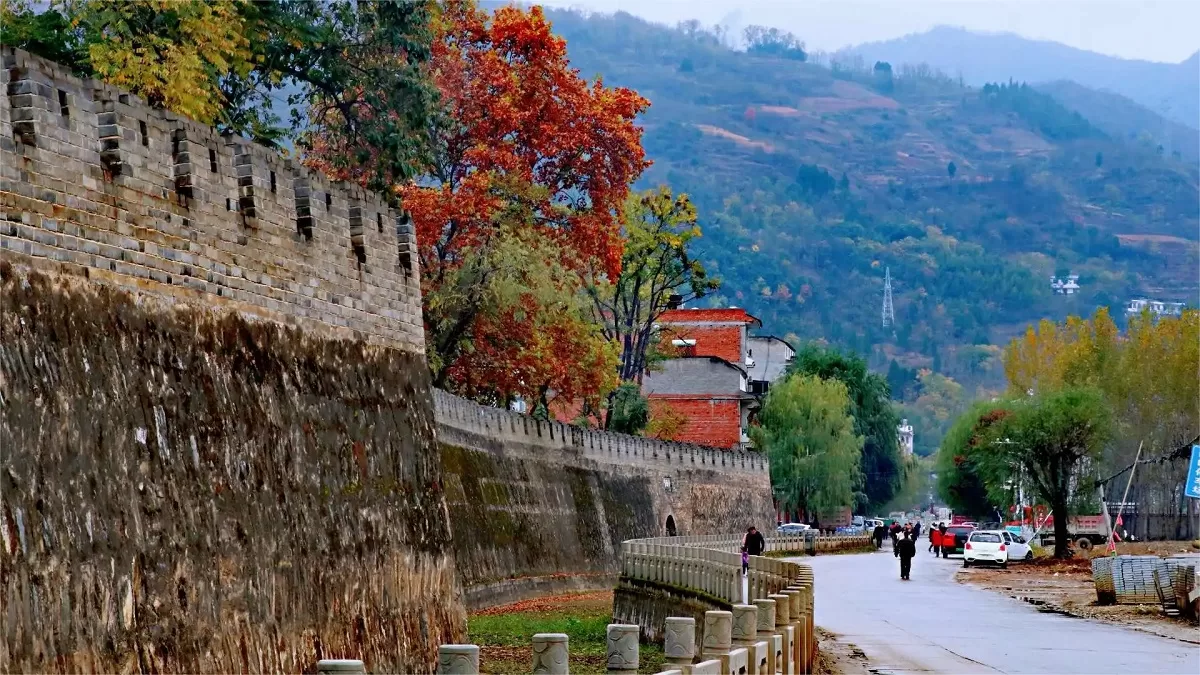Shangjin Ancient Town (上津古城), nestled in the heart of Yunxi County, Hubei Province, stands as a testament to the rich history of the region. This relic from the Qing Dynasty is strategically positioned on the northwest border of Hubei, adjacent to Manchuan Town in Shaanxi Province. Bordered to the south by the Jianghan Plain and embraced by the Qinling Mountains to the north, the ancient town rests on the eastern bank of the Jinqian River, a tributary of the Han River. Often referred to as “morning in Qin and evening in Chu,” Shangjin Ancient Town has played a central role in the local landscape for over a thousand years.
Table of Contents
- Basic Information
- Location and Transportation
- Highlights of Shangjin Ancient Town
- Other Attractions in Yunxi County
Basic Information
| Estimated Length of Tour | 3 hours |
| Ticket Price | Free |
| Opening Hours | 24 hours a day |
Location and Transportation
Shangjin Ancient Town is situated in Shangjin Town, approximately 70 kilometers northwest of the Yunxi County urban center in Shiyan City, Hubei Province, China.
To reach Shangjin Ancient Town, there are convenient transportation options from Shiyan City. Three direct buses to Shangjin depart daily from the Sanyan Passenger Bus Station in Shiyan at 7:00, 14:00, and 15:00. Alternatively, travelers can take a bus from Shiyan to Yunxi and then transfer to a small-sized passenger bus heading from Yunxi to Shangjin.
Highlights of Shangjin Ancient Town
Long History

Established during the waning years of the Wei Kingdom in the Three Kingdoms period (262 AD), Shangjin has been the focal point of this region since the inception of Pingyang County. Over the course of seventeen centuries, the town underwent transformations from a county to a commandery. Starting from the Southern Song Dynasty, the vicinity around Shangjin became a hotspot for military conflicts, turning the town into a strategic military outpost on the border between Hubei and Shaanxi. It wasn’t until 1368, during the Ming Dynasty, that Shangjin was officially incorporated into Yunxi County. Throughout its history, Shangjin has been established as a county 14 times, upgraded to a commandery on six occasions, and even designated as a prefecture twice, showcasing its irreplaceable role in every historical iteration.
Grand City Walls

The ancient town boasts a perimeter of 1236 meters and covers an area of approximately 80,000 square meters. The seven-meter-high city walls, constructed in a trapezoidal shape, consist of bricks from the Ming and Qing dynasties, measuring 45 cm in length, 22 cm in width, and 10 cm in height. The trapezoidal design accommodates four city gates named Jieqin (Bordering Shaanxi), Dachu (Reaching Hubei), Tonghan (Leading to Han River), and Lianyun (Connecting to Yunxi), each reflecting the crucial geographical significance of Shangjin as a crossroads. Additionally, a corner gate known as Xiaoxi serves as an entrance for the convenience of the local residents.
Ming Dynasty Bell

One of the prominent cultural relics within Shangjin Ancient Town is a large bell dating back to the Ming Dynasty. Forged in the sixth year of the Hongzhi era (1493), this impressive bell stands at a height of 2 meters, weighing a staggering 2500 kilograms. Crafted from a copper-iron alloy, the bell exhibits exquisite workmanship and aesthetic appeal. Adorning the top of the bell are dual dragon heads, tightly clamped to the body to ensure stable suspension. The lower part takes on a lotus flower shape, incorporating the eight trigrams within its design. The bell’s body is engraved with copious amounts of text, predominantly in regular script, with some sections in small seal script. These inscriptions provide a detailed record of the donors, fundraisers, craftsmen, and the casting time, offering a tangible link to the town’s history.




